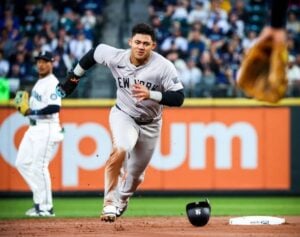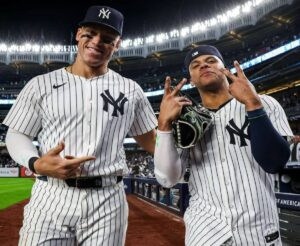Insider cautions Yankees by drawing a parallel between Juan Soto, Stanton
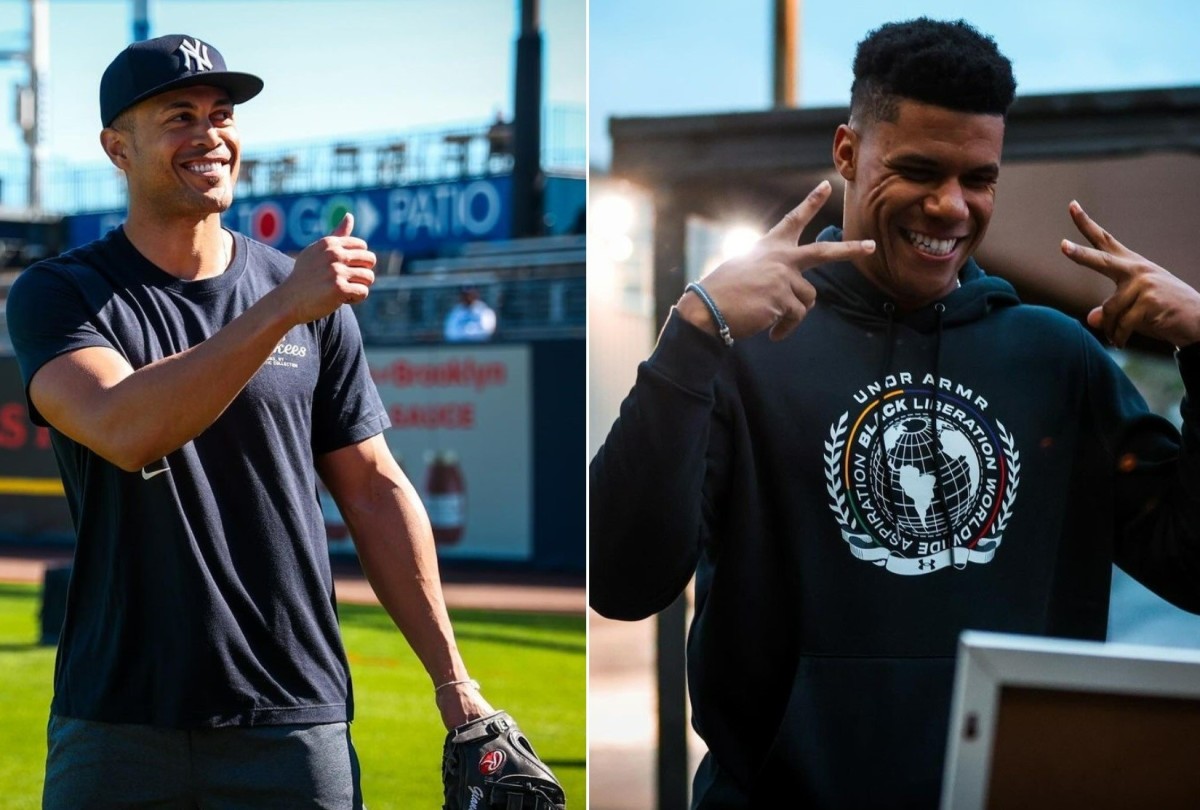
John Allen
More Stories By John Allen
- Mother’s Day: How Anthony Volpe’s mom molded him into a Yankee phenom
- Yankees’ Aaron Judge accomplishes MLB milestone unseen in 100 Years
- Dominguez’s future in pinstripes rests on Yankees’ deal with Soto
- Yankees reset strategy with Jonathan Loaisiga back in bullpen plans
- Blake Snell to Yankees? Weighing the pitching powerhouse’s worth in the Bronx
Table of Contents
With the electrifying arrival of Juan Soto, Yankees fans are experiencing a déjà vu of sorts. Similar to the 2018 Giancarlo Stanton trade, the team has acquired a young, superstar slugger expected to bolster their offensive firepower alongside Aaron Judge.
Stanton, fresh off an NL MVP season and a staggering 59 home runs, joined the Yankees amidst a flurry of excitement. The deal involved two prospects with uncertain futures and a surprising concession from the Marlins: covering $30 million of Stanton’s hefty contract. This move fueled a sense of triumph among Yankees officials, who believed they had outsmarted the Marlins’ inexperienced executive, Derek Jeter.
However, while the parallels are undeniable, it’s crucial to acknowledge the differences in context and player profiles. Stanton, then 28, came with injury concerns and a less consistent track record compared to the 24-year-old Juan Soto. Additionally, the acquisition of Soto didn’t involve the same level of prospect capital given up by the Yankees in the Stanton trade.
Juan Soto echoes Stanton of 2018
The Yankees‘ offseason saw two sluggers with hefty contracts join forces: Giancarlo Stanton, already established with his $325 million deal, and Juan Soto, whose potential future contract hangs heavy in the air with a price tag exceeding $500 million. While physically separated by an empty locker, they’re united by the immense expectations and financial implications surrounding their roles in pinstripes.
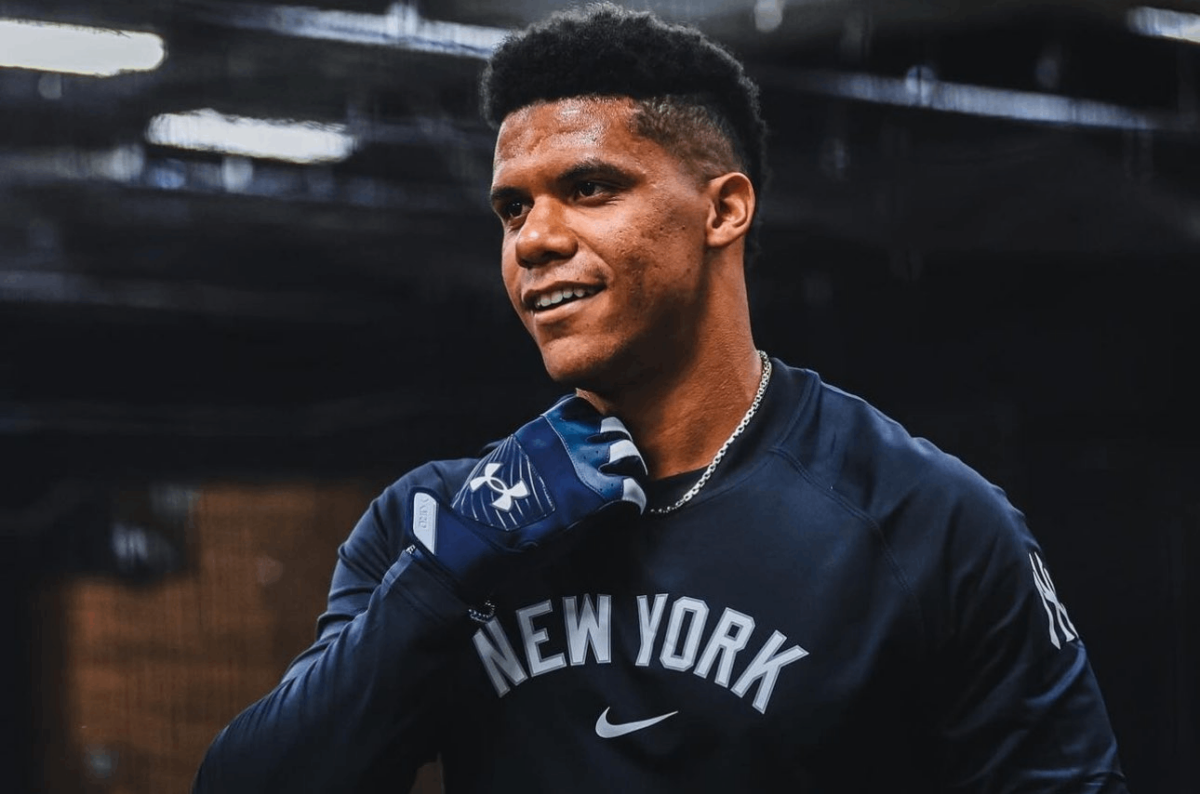
For Stanton, the focus is on proving his continued relevance after years of injuries and inconsistent performance. His acceptance of a supporting role alongside a younger Juan Soto seems evident, but his large contract remains a financial burden for the Yankees.
For Juan Soto, the challenge is showcasing his worth and justifying a potential record-breaking contract. The Yankees, meanwhile, face the looming possibility of him leaving after just one season, leaving them with a hefty financial hangover.
While Stanton publicly expressed excitement for their combined power, a hypothetical “truth serum” might reveal deeper concerns within the organization: the potential loss of Juan Soto and the long-term financial commitment to Stanton.
Undoubtedly, Juan Soto’s arrival should alleviate the burden solely placed on Judge. However, for this Yankees lineup to regain its destructive force, everyone must contribute. This entails Anthony Rizzo overcoming his concussion concerns, DJ LeMahieu returning to full health and replicating his second-half performance from last season, Gleyber Torres and Alex Verdugo capitalizing on their contract years, not just Soto, Anthony Volpe making strides forward, and Austin Wells demonstrating strong defensive skills to warrant inclusion of his left-handed bat in the lineup.
Furthermore, if Stanton can emulate his 2021 season, during which he recorded 579 plate appearances, smashed 35 homers, and boasted a 136 OPS-plus, the lineup dynamic would significantly improve. This season, Stanton’s performance more closely resembled that of Houston’s defense-oriented catcher, Martin Maldonado, compared to the previous year, where he resembled the potent Yordan Alvarez of Houston.
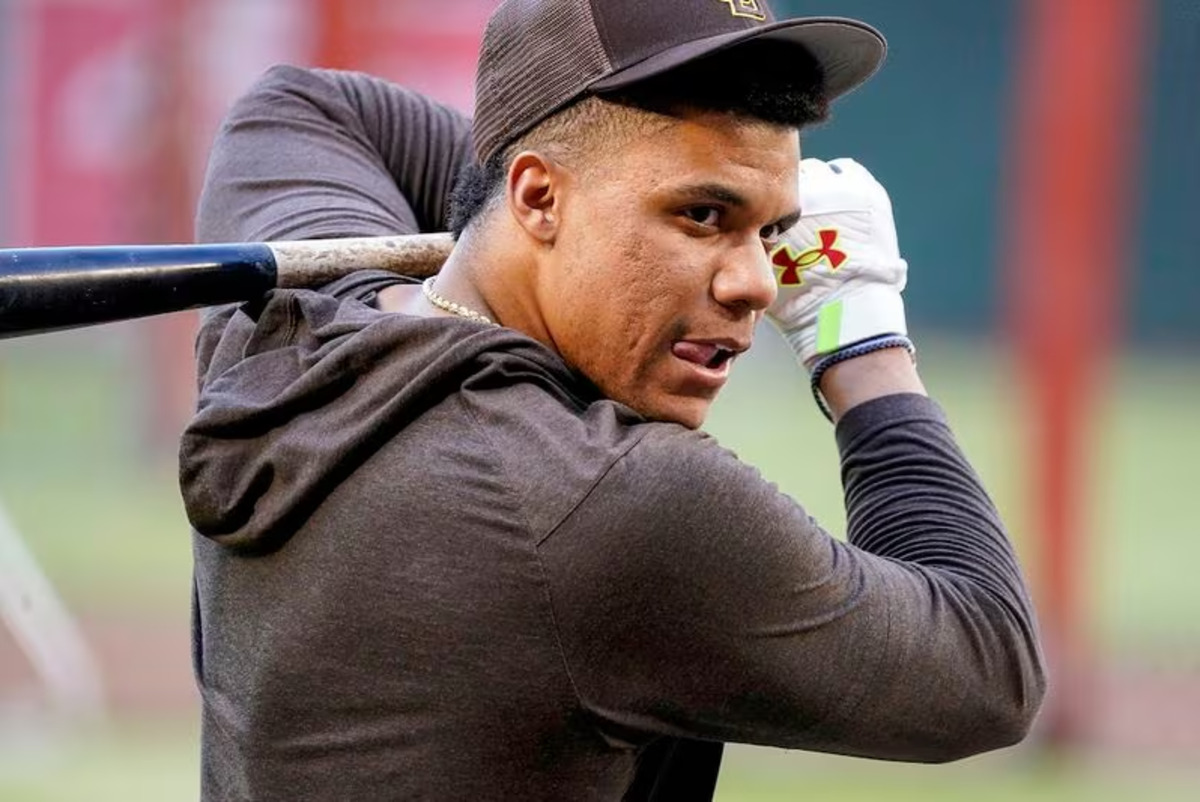
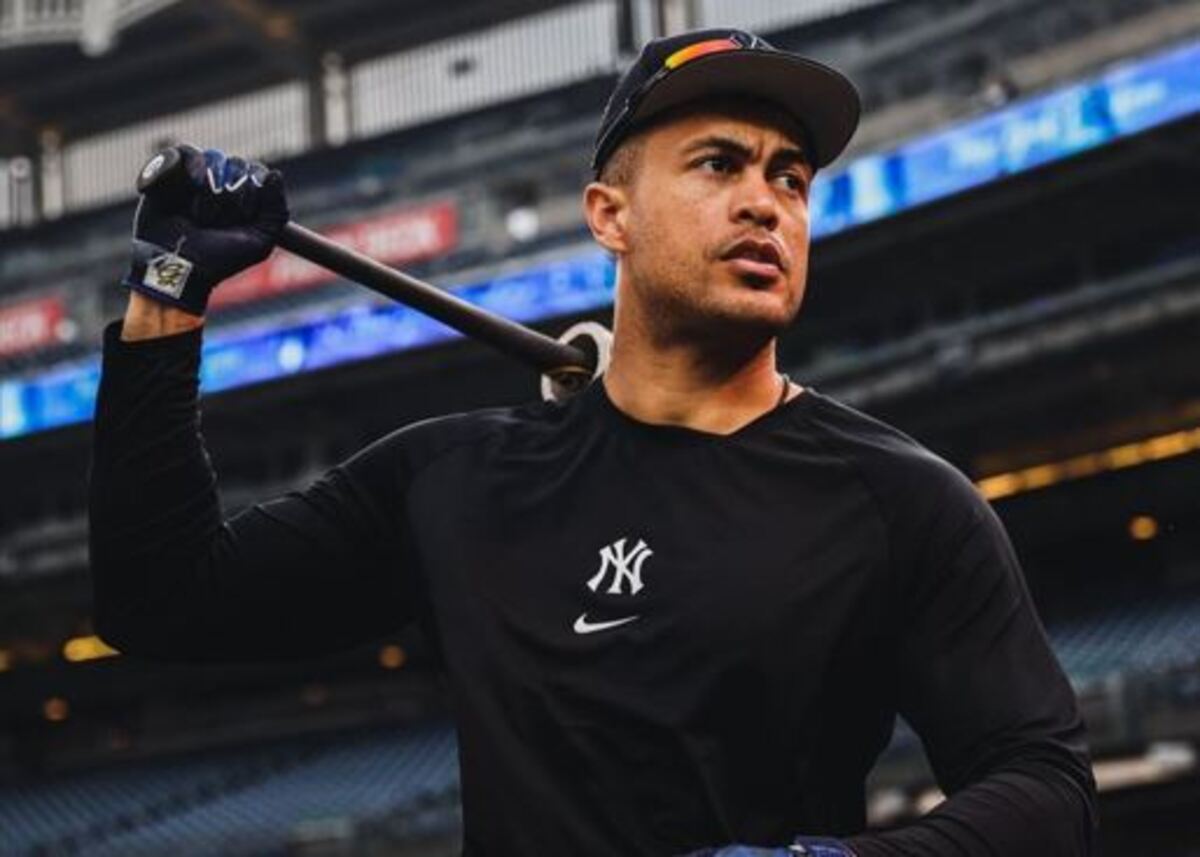
Will the Yankees stick to Stanton?
What sets the current situation apart is that the lineup is no longer overly reliant on Stanton. The Yankees could opt for a defensive/offensive balance by deploying Trent Grisham in center field, Verdugo in left, Judge in right, and Juan Soto as the designated hitter, arguing that this configuration offers the best combination of defense and offense. This scenario would relegate Stanton to the bench, provided Aaron Boone has the courage to make such a decision.
Stanton conveyed that if players fail to produce, adjustments will be made to optimize the lineup, emphasizing his responsibility to contribute to that optimization.
In pursuit of this goal, Stanton has visibly slimmed down and expressed improved well-being following his initial offseason devoid of injuries in recent years. He hinted at forthcoming alterations to his swing, underscoring his acknowledgment of his decline and the necessity to address it.
Stanton emphasized that his primary responsibility is to deliver on the field rather than merely offer diplomatic statements. He stressed his commitment to contributing to the team’s quest for a championship, noting that achieving this goal has thus far eluded them and must be rectified.
Despite shedding veterans like Aaron Hicks and Josh Donaldson, Giancarlo Stanton remains a player under scrutiny by Yankees fans. While he claims to tune out external “noise” and focus on his performance, questions persist about his consistency and health heading into the new season.

Last year, Stanton’s offensive output raised eyebrows. Among players with at least 350 plate appearances, his .191 batting average was tied for the lowest, alongside Martin Maldonado, primarily known for his defense. Notably, his 87 OPS+ matched that of Trent Grisham, acquired mainly for his speed and defense, not offensive production.
Further casting doubt is Stanton’s extensive injury history. Over the past five seasons, he’s spent time on the injured list eight times, with seven of those occurrences involving lower-body issues. Last April’s hamstring strain sidelined him for five weeks, and he played cautiously upon his return, limiting his running.
GM Brian Cashman, while acknowledging Stanton’s ability to deliver when healthy, didn’t shy away from addressing the elephant in the room at the November GM meetings. He stated, “He’s likely to get hurt again because it’s been a recurring issue for him,” highlighting the concern surrounding Stanton’s durability.
With the revamped lineup featuring Juan Soto and potentially utilizing a balanced offensive-defensive approach, Stanton’s exact role remains unclear. Balancing his strengths with his limitations will be crucial for manager Aaron Boone.
Giancarlo Stanton and Yankees GM Brian Cashman seemingly put concerns to rest after Cashman’s blunt assessment of Stanton’s injury history at the GM meetings. While Stanton’s agent initially responded, Stanton himself assured reporters on Monday that they had a conversation and cleared the air.
This incident highlights the delicate situation surrounding Stanton’s future. His commitment to improving his physical condition suggests an awareness of the need to stay healthy at 34 years old. The Yankees, meanwhile, are invested in his future, with $98 million remaining on his contract and hopes of him forming a potent trio with Judge and Soto.
However, worries persist. Stanton’s injury history creates a “worst-case scenario” where the Yankees face a double burden: continued financial commitment to Stanton combined with potential limitations on his contributions, while simultaneously navigating delicate contract negotiations with Soto.
What do you think? Leave your comment below.
- Categories: Giancarlo Stanton, Juan Soto
- Tags: Giancarlo Stanton, Juan Soto

 Follow Us
Follow Us